
SB2U-1 Vindicator
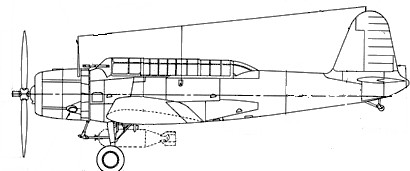
The
Vindicator
was the first operational monoplane designed by Vought and
represented a major paradigm shift away from biplanes in use
by the
Navy up to that point. The SB2U-1 was a fabric covered truss
design,
with the exception of the wing leading edges and the engine
cowl,which
were metal covered. The SB2U-1 was armed with a forward firing
.30
caliber machine gun mounted in the starboard wing, outside of
the
propeller arc and a second .30 caliber gun on a flexible ring
mount in
the rear cockpit. The offensive bomb load consisted of a
single 1,000
pound bomb carried on a fuselage centerline rack or two 500
pound bombs
carried on racks mounted on the wing, outboard of the landing
gear. The
centerline bomb could be replaced with a 50 gallon fuel tank
to extend
the aircraft's range for scouting missions. The first
deliveries to the
U.S. Navy took place on December 13, 1937, when Bombing
Squadron Three
aboard the USS Saratoga received their first aircraft. VB-3
became the
first Navy monoplane squadron to operate from a carrier and
the second
Navy squadron to be equipped with a monoplane. The SB2U-1
Vindicators
were primarily used for neutrality patrols prior to WWII and
for
Atlantic submarine and surveillance patrols early in the war.
Most were
phased out of service by mid 1941.
The Kit
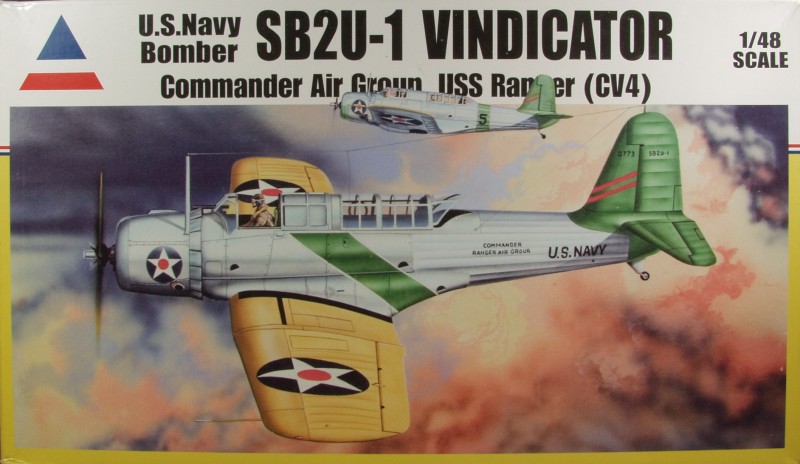
The kit parts are molded in a medium gray and feature both raised and recessed detail as is appropriate. The parts are cleanly molded, nearly flash free and with average sized sprue attachment points. The surface finish is smooth and mold alignment seams are minimal. Surface defects are minimal with one exception. This kit has some sink marks on the fuselage that correspond with heavy stringers molded inside the fuselage. Normally these would not be a big deal but they occur on the scalloped portion of the fuselage making them very difficult to deal with. The amount and severity of these sink marks seems to vary with the run of the kit, early ones being more prominent and after an attempt at fixing the problem, either less prominent or not noticeable. My kit seems to be somewhere in between so it will need to be addressed at some point. The are some ejector pin marks, some are hidden but other in the cockpit area will probably need addressed.
The interior detailing is quite extensive and should look quite nice when complete. Reports indicate that it can be a tight fit when closing the fuselage halves so some care is needed. The engine features a separate piece with the push rods and ignition wires. The wires are a bit heavy for the scale but will be adequate for most I suspect. So lets take a look at the parts.
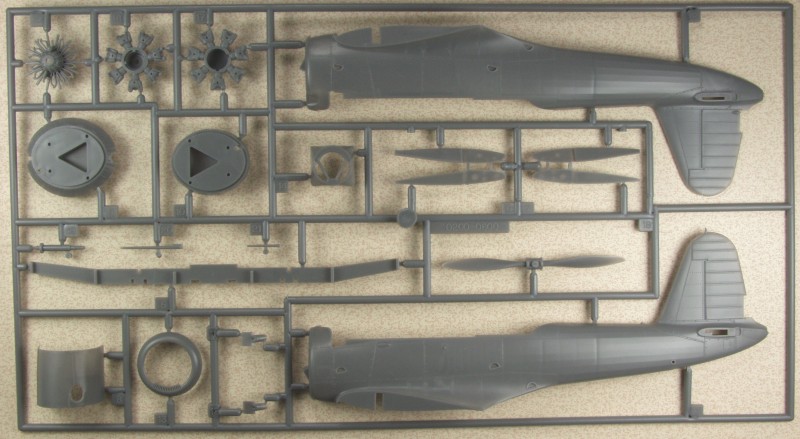
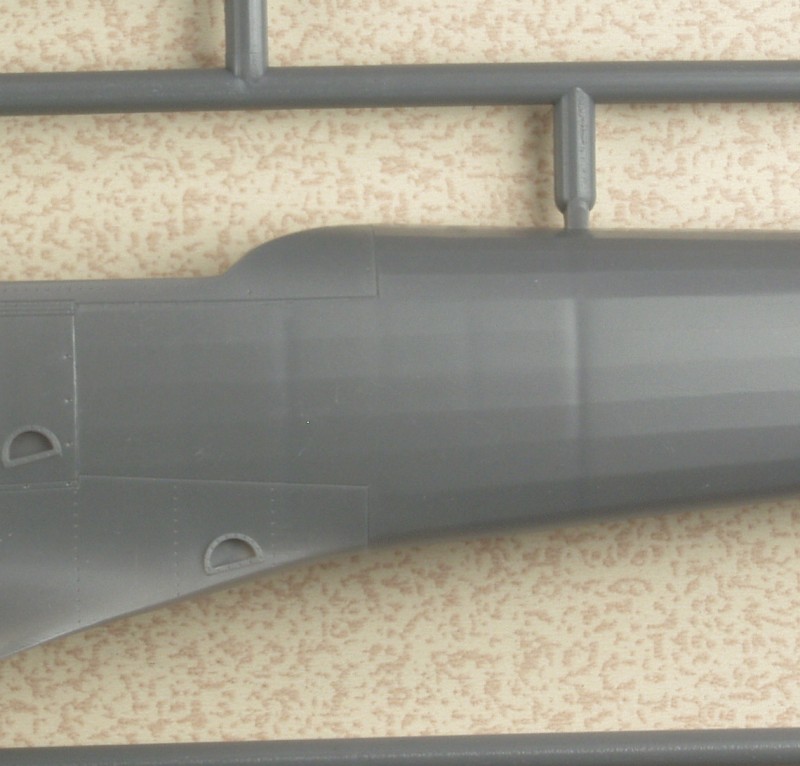
Much of the interior detail is on this sprue, note there are separate side frames for the cockpit areas and that two sets of tires are provided, one set weighted, the other not.
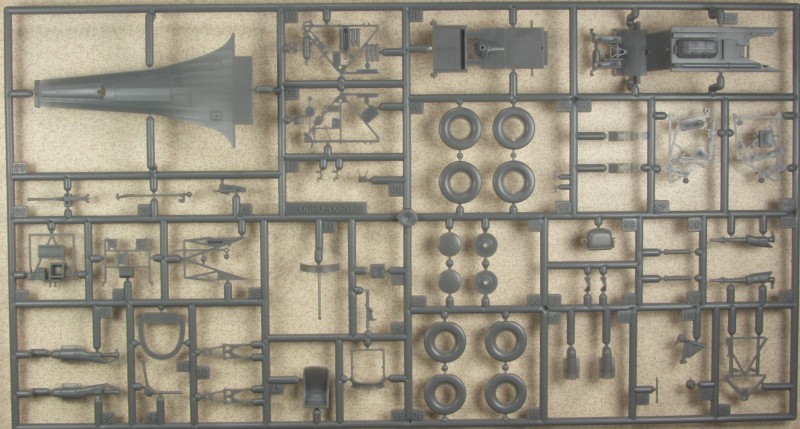
The kit comes with two practice bomb dispensers, two 100 pound bombs, one 1,000 pound bomb and one drop tank so you have plenty of options for under wing stores.
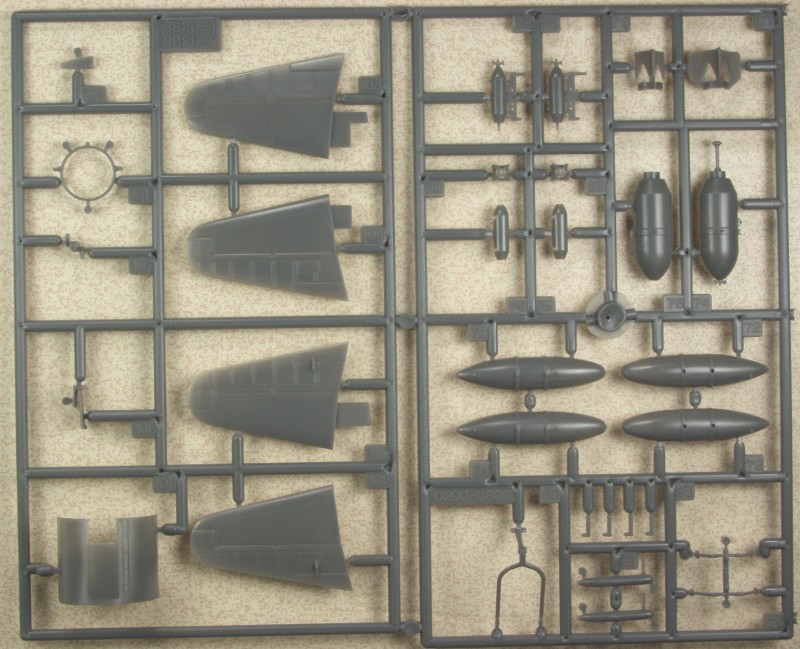
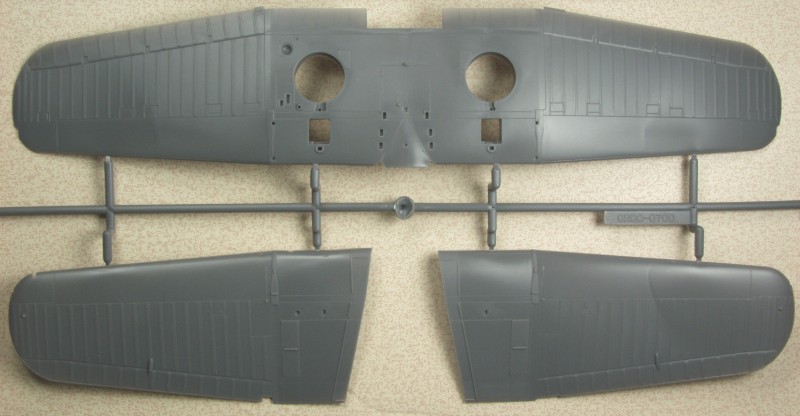
The kit comes with PE lap belts, early aircraft like this often did not have shoulder harnesses.
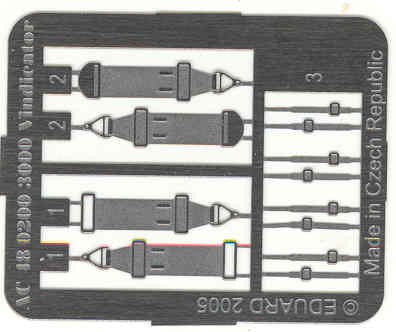
The clear parts are thin and reasonably clear, the upper curved portions of the canopies has some distortion. The kit supplies parts for both open and closed canopies.
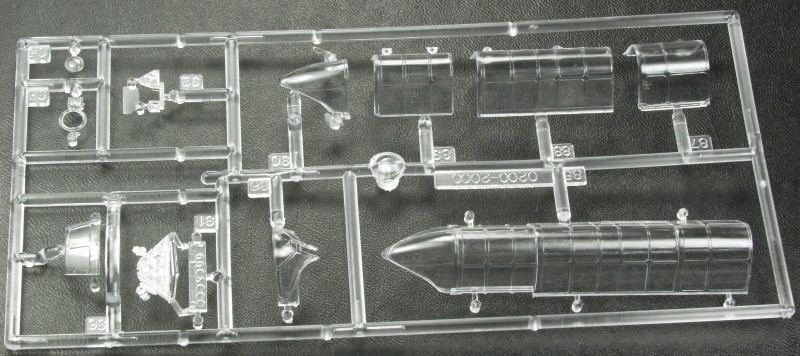
The kit also supplies a set of canopy masks which is always welcomed assuming they work well.
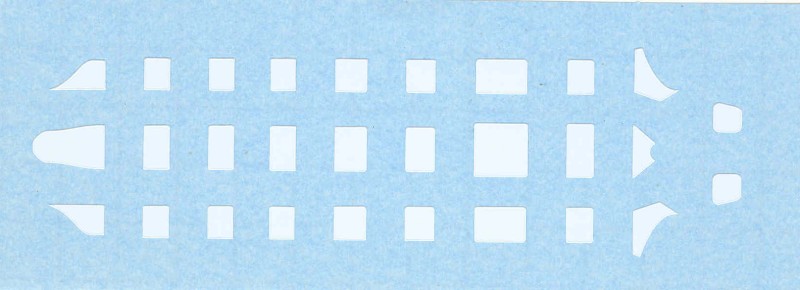
The decals provide markings for one aircraft, that being the Commander, Air Group, USS Ranger. The decals look good on the sheet, thin with with good color saturation and not a lot of excess clear film. Registration is up to you when it comes to aligning the red spot in the center of the star. Instrument dials for control panels are provided.
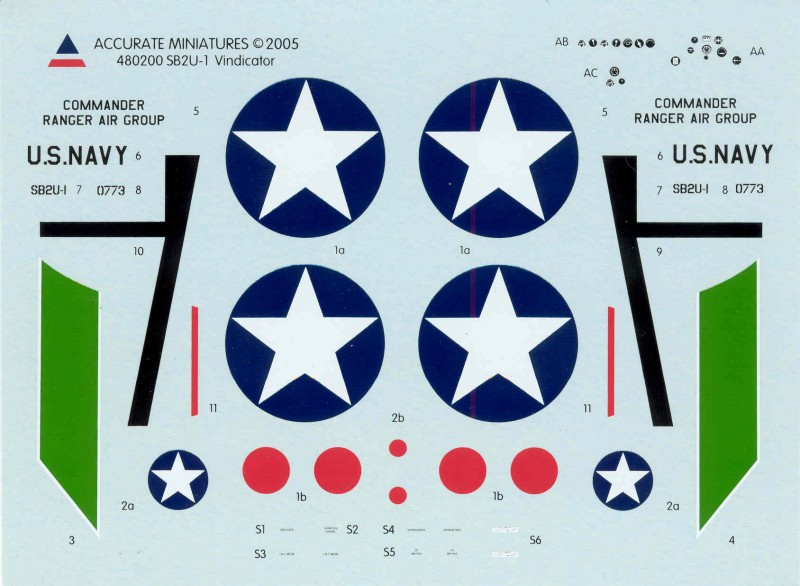
The instructions are printed on three 11" x 13" pages that are folded and stapled in the landscape format creating a twelve page booklet. The first page is a black and white half tone print of the aircraft. Page two has history and a paint chart with references for seven brands of paint plus the generic color name and FS number if applicable. The next eight pages have one assembly step each which includes a diagram plus written instructions, which is somewhat unusual these days. Color call outs seem to be pretty complete. The next to the last page has the main painting and decal position data. The back page is blank except for the company name and address.
After Market Goodies
Although I think the kit is pretty complete right out of the box Eduard did make several PE sets as well as a mask set, Quickboost did resin exhaust stacks, Techmod and Yellow Wings both made decals if you wish something different from the kit offering. I did not find the Eduard items in stock at my usual sources so you may need to search for them.
Conclusions
While this is a nicely detailed kit and appears to be mainstream it needs to be treated as if it is a short run kit. It will will require a lot of test fitting if you want a good result and as such I can only recommend it to more experienced modelers.
Links to kit build or reviews
An in box review here, very thorough, covers some items I didn't mention in my review, another in box here with a lot more history. This link will link you to a lot more information.
References
I currently have none for this aircraft although there is some information on line and the last link above lists some printed references.